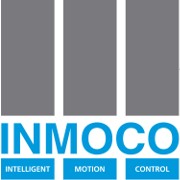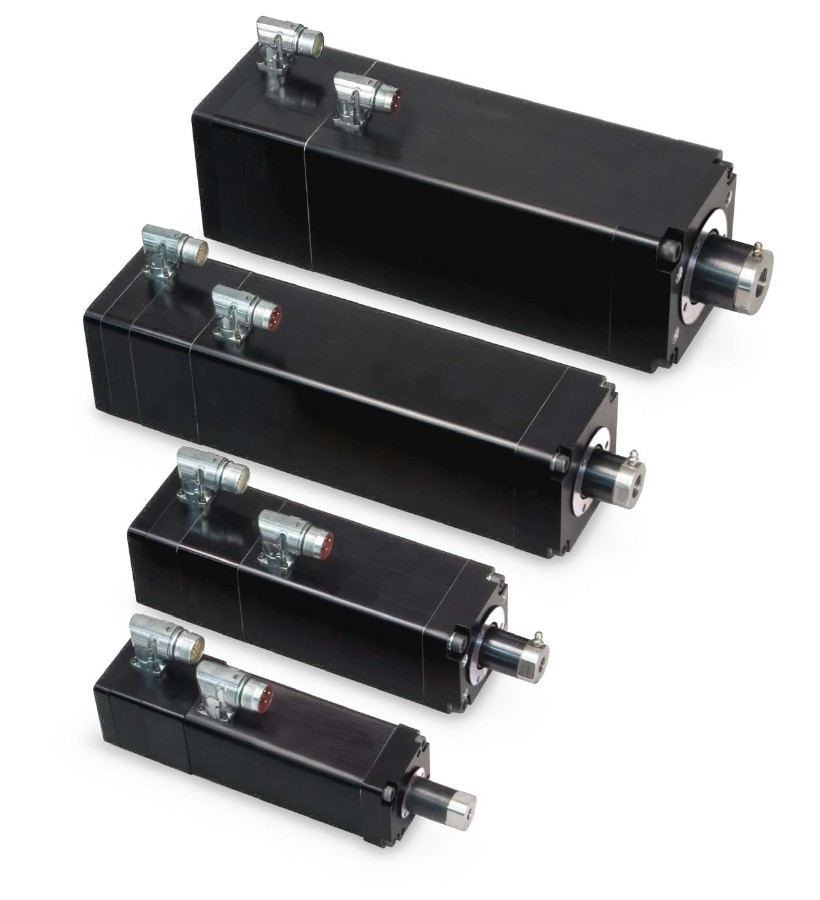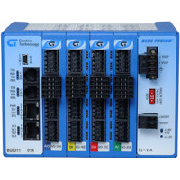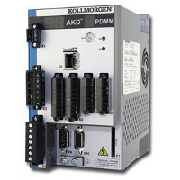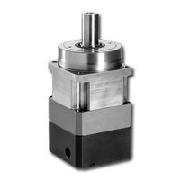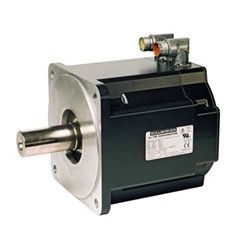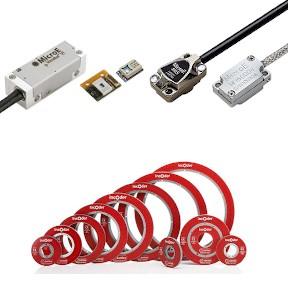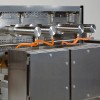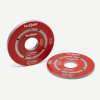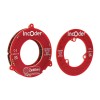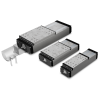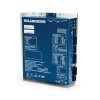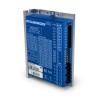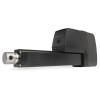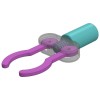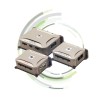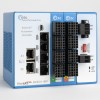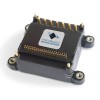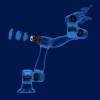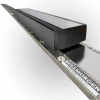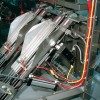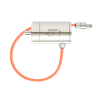Intelligent Motion Control Ltd (INMOCO)
For over three decades INMOCO has been at the forefront of Industrial Automation and Motion Control offering a comprehensive range of motion control products covering compact Servo Amplifiers, Position Controllers, Gearheads, Stepper Motors and Controllers, Linear Motors, Sensors, and Electric Actuators. More recent additions to the product range include High Precision Linear and Rotary Encoders.
Today, INMOCO not only provides products with application and after sales support, but can also incorporate those products into customer-specified electromechanical sub-assemblies, which also includes testing and calibration. These latest additions to our services not only enables our customers a "Plug and Run" solution, but also enables them to reduce their supplier base.
Our facilities include system engineering, ex-stock sales distribution, building and testing sub assemblies and a class 10,000 clean room facility.
-
Maintaining hygiene and productivity with motion solutions for food packaging machines
9 April 2024From augers to bottling systems, packaging machines for the food & beverage sector depend on fast, accurate motion systems to deliver the throughput they need. While servo motors and drives are required for their precision and dynamism, the motion solution is also subject to the stringent hygiene regulations that apply to machinery used in the sector. Maintaining hygiene is vital, and it’s important that the approach to achieve it minimises downtime to maintain productivity.
Gerard Bush, Engineer at motion specialist INMOCO, discusses hygienic design and servo systems for food packaging machinery.
Although the domestic food manufacturing market contracted as expected last year in line with expectations resulting from the cost of living rise1, the UK food and beverage packaging machinery market is projected to continue to grow2. Requiring adaption throughout the sector’s value chain, a key trend is the continued consumer demand for sustainability. On the one hand, this requires increased use of sustainable materials and reduced reliance on plastic, while on the other, the government is likely to debate a further push on retailers to provide more loose, package-free produce3.
For packaging machinery manufacturers, this means the future is set to be increasingly competitive. As the cost of packaging materials rise, along with rising food prices, machine builders will face demands for more productive and efficient designs. The need to optimise overall equipment effectiveness will equate to machines with increased performance and throughput. Crucially, it will also require more reliable designs that minimise downtime.
Ensuring hygiene
Alongside the increased need for higher machine productivity, ensuring hygienic safety standards4 is fundamental. However, to maintain machine uptime and profitability, careful management of the cleaning and hygiene maintenance process is vital. To achieve this, the emphasis for machine builders will be on designs that enable effective cleaning with the minimum of downtime.
As a cleaning process can involve high pressure and high temperature washdowns, often with aggressive chemical solutions, it’s essential that this doesn’t lead to equipment damage. This can mean costly equipment replacement, along with the downtime required for refit. Most significantly, from a hygiene standards perspective, corrosion can harbour bacteria, impacting the safety and quality of the packaging process itself.
For packaging machine builders, this challenge demands careful design consideration, particularly relating to motors. Older machine designs are often driven by motors without sufficient ingress protection, and as a result, they require shields or bags to protect them during washdown. This presents the challenge of the time required to fit the protective bags each time, plus the demand for separate cleaning by hand. Neither is this manual process a fail-safe mode of adequate motor protection, or of ensuring a sufficient washdown every time.
Even for machines with clean-in-place designs that pump cleaning solutions throughout, if a motor isn’t sufficiently protected, this can still give rise to the same challenges. Despite this controlled hygiene approach, the motor still needs to undergo a washdown, so they still require sufficient protection.
Hygienic motor design
To meet the demands of packaging applications, a servo motor is typically required, providing the dynamism and precision needed to ensure rapid, accurate motion. To save the machine user significant time and cost while carrying out cleaning procedures, Kollmorgen’s engineers have combined the servo capability with protection that enables the motor to undergo a thorough washdown.
A key requirement is the ability for the motor to withstand regular, high temperature, high pressure washdowns, without the risk of water ingress. To achieve this, a motor should be designed to meet the IP69K standard that can be achieved with a food-grade PTFE shaft seal that creates an impermeable barrier, along with sufficient protection for the cable connections.
High-level ingress protection should be teamed with a rounded motor housing that enables run-off, and the construction material must also prevent corrosion. Aluminium anodising can achieve this, while stainless steel is the optimum choice. A smooth surface prevents any bacterial accumulation, and to meet EHEDG (European Hygienic Engineering and Design Group) standards, it’s profile should not exceed 0.8μm. The motor shaft too should also adhere to these standards.
System architecture
Servo motors require the control of a servo drive, and using a decentralised system, which places control closer to the motor, is advantageous to reduce the cost, installation, and maintenance requirements of extended cabling typically required for central control. To achieve this layout, even though the servo drive isn’t in the direct vicinity of machine actuation, it will still be mounted to the packaging machine. As a result, it will require protection extending to IP67, preventing ingress from pressurised liquid spray.
To optimise a machine’s motion control specification, while achieving a hygienic design, motion engineering expertise can be invaluable. INMOCO regularly works with machine builders to specify high performance and hygienic servo motor and drive combinations from automation vendors such as Kollmorgen.
As well as sizing the solution for the desired work points and identifying the necessary control functionality, our engineers have the experience to optimise the motion solution integration into the wider machine architecture.
2https://www.globaldata.com/store/report/uk-packaging-market-analysis/
3https://www.sustainability-beat.co.uk/2024/01/02/supermarkets-plastic/
4https://www.hse.gov.uk/food/standards.htm
About INMOCO
Established in 1987, INMOCO now offers an extensive range of motion control equipment including: compact servo amplifiers, position controllers, stepper motors, PLC controllers, linear motors, sensors, electric actuators and gearheads. INMOCO’s product portfolio is supported by extensive applications and technical expertise, in addition to customer-specified electro-mechanical development and sub-assembly services; including calibrating and testing in a class 10,000 clean room facility.
-
Maximising Efficiency: The Art of Motor Selection for Battery-Powered Industrial Equipment
14 March 2024In a world where 37% of global energy consumption stems from industrial processes[1], the shift toward battery-powered equipment has never been more critical. This transition is driven by the dual demands of enhanced efficiency and sustainability. Central to this challenge is the selection of a motor – the heart of any industrial equipment – that not only meets stringent performance requirements but also optimises battery life for prolonged, effective operation.
In this article Gerard Bush, Motion Specialist at INMOCO explores the most important considerations in motor selection for battery-powered applications, illuminating the path to a more sustainable and competitive future.
The Importance of Motor EfficiencyIn today’s rapidly evolving industrial landscape, motor efficiency is more than a mere specification; it is a critical design parameter, especially for battery-powered applications. Efficient motors draw less current, reducing the load on batteries and significantly extending the operating time between charges. This is paramount in industries where downtime can result in substantial financial losses. Furthermore, motor efficiency is intrinsically linked to sustainability.
As industries worldwide grapple with environmental responsibilities, highly efficient motors emerge as heroes. They not only reduce energy consumption but also minimise heat generation and wear, resulting in longer motor life and less waste. In an era of soaring energy costs and growing environmental concerns, optimising motor efficiency is an economic imperative and important for environmental stewardship.
Sizing Motors CorrectlySelecting the right motor size for a specific application is a fundamental step in any design process, ensuring optimal performance and energy use. When a motor is properly sized to an application’s requirements, it operates at peak efficiency, thereby reducing energy costs and wear. Conversely, an undersized motor may struggle to handle the load, leading to overheating and premature failure. On the other hand, an oversized motor tends to operate below its optimal load range, resulting in poor efficiency and higher operating costs. In a competitive and resource-conscious world, the precise sizing of motors is not just a technical detail, it is a critical financial and operational decision.
Key Motor Constants and Performance Metrics
Motor constants, such as the torque constant (expressed as Km), are essential tools for engineers when comparing and selecting motors. These constants offer insights into a motor’s performance characteristics, helping to predict how it will behave under various load conditions. For example, a higher Km value typically indicates greater torque for a given current, a crucial factor in applications like robotics, where precise movement is required. In the design of an automated assembly line, engineers might choose a motor with a specific Km value to ensure that it can move parts swiftly and accurately while minimising energy consumption.
Thermal Management Strategies
Heat generation is a significant challenge in electric motors, particularly in compact, battery-powered applications where space is at a premium. Effective thermal management is crucial to maintain performance, efficiency, and longevity of motors. Common strategies include active cooling systems, such as fans or liquid cooling, and passive solutions like heat sinks or thermal pads. Designing with thermal management in mind is not just a technical necessity, it’s a pivotal aspect that can dictate the success and reliability of the entire application.
Power Supply Integration and Battery Life
The integration of motor and power supply designs is a crucial element of any battery-powered application. A motor’s efficiency directly affects the rate at which a battery is drained; the more efficiently a motor operates, the less power it draws from the battery, subsequently extending battery life. Engineers can optimise this relationship by carefully selecting motors with suitable voltage, current, and power ratings that align with the battery’s capacity and discharge characteristics. Additionally, employing advanced control strategies, such as regenerative braking, can further harmonise this relationship, enhancing performance while preserving precious battery energy.
Emerging Technologies and Innovations
Emerging motor technologies, such as high-efficiency permanent magnet synchronous motors (PMSMs) and switched reluctance motors (SRMs), are reshaping the landscape of industrial equipment design. These innovations promise increased efficiency, translating into lower energy consumption for battery-powered applications. For example, SRMs are gaining traction due to their high efficiency and lower losses under partial load conditions. As battery technology continues to evolve alongside these motor innovations, engineers will increasingly have the tools to design industrial equipment with prolonged operational time and reduced energy costs. Staying abreast of these technologies will be paramount for future successes in equipment design.
Motor selection and design are pivotal in battery-powered industrial applications. From sizing motors correctly to avoiding thermal challenges and managing power supply integration, each decision plays a crucial role in the overall efficiency and longevity of equipment. Emerging technologies are ushering in a new era of potential, offering promising pathways for increased efficiency and sustainability. For engineers and manufacturers, investing time to understand and optimise motor efficiency is not merely beneficial—it is essential. As competition tightens and sustainability becomes paramount, this knowledge will be a defining factor for success. Act now to ensure your designs lead the future of industrial equipment.
[1] https://www.iea.org/energy-system/industry
-
Specifying a position sensor for safety requirements
5 March 2024In a motion system, position sensors can be crucial to ensure safety. Particularly in applications working in close proximity to humans, such as surgical robots, or even where sensitive equipment has to be protected, position feedback is key. To ensure a machine build and integration that enables safe and reliable operation, there are a number of key design considerations that OEM engineers need to consider when specifying a position sensor.
Gerard Bush, engineer at motion specialist INMOCO, explains.
Position sensors, ranging from transmitters and transducers through to devices such as encoders, can be a vital aspect of ensuring the safety rating of a motion application. Measuring angle, and even linear displacement, as well as angular or linear speed, these devices generate an electrical signal dependent on the deviation from the set-point. A ‘failure’ signal could be generated by a cessation of the output signal, or an incorrect position output. Most seriously, failure could also include a reading that is actually reporting an incorrect position.
While many applications have a ‘safety relevant’ consideration, for those with ‘safety critical’ requirements, a failure in position feedback can have significant implications. As a result, when specifying a position sensor, it’s key to consider the importance of its feedback within the safety spectrum. As the importance of safety moves towards a critical level, the most appropriate sensor configuration and specification advances to suit.
Safety sensor configuration
The first level of position safety can be introduced with a sensor that can self-diagnose. In a built-in test, if the sensor fails one or more of its internal diagnostic checks, it will output an error signal that could take a variety of forms. Devices such as inductive encoders with digital communication protocol outputs like SSI or SPI, can also be configured to carry an error flag if necessary.
Using built-in-tests, sensors continue to operate but their output contains a warning. Error flags generated by these internally referenced sensors should be used to trigger a fail-safe state in the wider application.
As safety relevance increases, sensors should also receive external inputs. For example, taking a ship’s microwave satellite communications system, its antenna should move within a defined arc, protecting personnel and equipment from microwave energy. The antennas are driven by a motor and gearbox, and an encoder pair can be used to measure the angle of the gearbox output shaft, as well as the output of the motor shaft into the gearbox. If the two measurements differ, the antenna could be set to enter a fail-safe condition.
Adding redundancy
Redundant or duplex feedback arrangements can further increase safety by involving two sensors to measure the same parameter. Surgical robots, for example, often need feedback redundancy, to ensure the precise rotation angle of a motor shaft for the control of limbs and end effectors.
A single encoder can involve two sensors, one of which is electrically redundant, with both feedback devices built into a common mechanical housing. Here, each sensor operates independently, however the inner and outer ring sensors differ according to their mode of electrical feedback. For example, the inner sensor ring might offer incremental measurement, while the outer can provide an absolute digital signal. The advantage of a configuration involving two different feedback types is that it helps to prevent common failure modes.
When one or more sensors are used together, if one of the devices shows a different reading, it may not be immediately apparent which one is incorrect. Therefore, the host system should be engineered so it continues to operate only if the two sensors agree within reasonable bounds. If not, the system should switch to its fail-safe state.
To extend safety further still, mechanical redundancy can also be added, and devices can even be configured in triplicate. With a triplex position feedback arrangement, the system can be designed so that if two of the three sensors agree within reasonable bounds, the equipment is able to operate.
Position sensor specification
Combined with ensuring that the sensor achieves sufficient resolution, as long as safety is required, reliability will also be essential. For applications in environments that have the potential to involve any form of liquid or physical matter dispersal, from a surgical operating theatre to a ship’s deck, durability is crucial too. Non-contact, inductive sensors, like Celera Motion’s IncOder feedback devices, are an extremely reliable form of measurement as they are not subject to failure modes caused by splashes or particles.
INMOCO’s engineers are able to advise OEMs on the integration of position feedback devices and can specify the right sensor, whether the demands are to optimise resolution, ensure durability, or combine extended user needs. To ensure precision and safety across wider machine or application requirements, INMOCO can also provide design guidance on motion solution considerations, from the motor through to the controller.
About Celera Motion
Celera Motion, headquartered in Bedford, Massachusetts, is a market-leading provider of motion-control components and subsystems for OEMs serving a variety of medical and advanced industrial markets. Celera Motion offers precision encoders, motors, and customized mechatronic solutions that help customers solve challenging motion-control problems. For more information, visit www.celeramotion.com
About Novanta
Novanta is a trusted technology partner to OEMs in the medical and advanced industrial technology markets, with deep proprietary expertise in photonics, vision, and precision motion technologies. For more information, visit www.novanta.com
About INMOCO
Established in 1987, INMOCO now offers an extensive range of motion control equipment including: compact servo amplifiers, position controllers, stepper motors, PLC controllers, linear motors, sensors, electric actuators and gearheads. INMOCO’s product portfolio is supported by extensive applications and technical expertise, in addition to customer-specified electro-mechanical development and sub-assembly services; including calibrating and testing in a class 10,000 clean room facility.
-
Celera increases size of its reliable and accurate inductive encoder
5 March 2024Celera Motion has launched a new, larger-size version of its ultra-lightweight IncOder CORE inductive encoder series. The new 70 mm outside diameter (OD) feedback sensor is a frameless design, ideally suited to OEM integration projects including robotics. The new addition to the IncOder CORE series also increases resolution to 20 bits and raises positional accuracy to 0.035°. The device is supported in the UK by motion specialist, INMOCO.
The new 70 mm OD IncOder CORE inductive encoder adds to Celera Motion’s existing 44 mm OD design. With a hollow bore, and based on a PCB, the encoder is intended for use within rotary actuators. With an inside diameter of 30.3 mm, a total height of just 13.4 mm, and weighing just 24 g, the compact and lightweight encoder is designed for OEMs requiring precise feedback for demanding applications.
Precision for diverse applications
The IncOder CORE’s through-bore design is ideal for robotic joints, enabling the installation of cabling and components through its hollow centre. Its inductive, non-contact operation also makes the encoder insensitive to contamination. This gives a precision feedback capability even in harsh environments, from surgical robotics to automated agricultural machinery. The IncOder CORE can also be used in applications such as industrial and collaborative robotic systems, automated guided vehicles (AGVs), autonomous mobile robots (AMRs) and gimbals.
The new encoder also offers improved measurement for absolute position feedback. Boosting resolution to 20 bits provides high-resolution sensor performance, combined with accuracy down to 0.035°. The IncOder CORE can be configured to output digital rotary position data in a range of digital protocol options, including BiSS-C, SSI, SPI and Asynchronous Serial Interface (ASI).
Simple integration
The Celera Motion encoder also achieves greater measurement repeatability and reliability thanks to improved immunity to external magnetic fields. Through its field-proven, inductive technique, the sensor also ensures temperature-stable performance.
As well as compact dimensions, the frameless rotor and stator combination is easy to install with simple screw mounting and no precision tolerances to follow, saving time for installation into host mechanics. Calibration-free commissioning also simplifies the set-up process for OEM integration.
Celera Motion can also provide OEMs with customisation options including additional sizes for optimised system design, with prototype units stocked to speed up development. INMOCO assists in this process for UK-based OEMs and can integrate the Celera Motion IncOder CORE within wider motion system designs. INMOCO offers Celera’s Omni+ motors, as well as larger motor types and sizes and the motion specialist also provides a range of controllers to suit.
For more information, visit: https://www.celeramotion.com/incoder-core/About Celera Motion
Celera Motion, headquartered in Bedford, Massachusetts, is a market-leading provider of motion-control components and subsystems for OEMs serving a variety of medical and advanced industrial markets. Celera Motion offers precision encoders, motors, and customized mechatronic solutions that help customers solve challenging motion-control problems. For more information, visit www.celeramotion.com
About Novanta
Novanta is a trusted technology partner to OEMs in the medical and advanced industrial technology markets, with deep proprietary expertise in photonics, vision, and precision motion technologies. For more information, visit www.novanta.com
-
Tolomatic extends accurate and durable linear rail actuator range
12 December 2023Linear motion specialist, Tolomatic, has extended the capability of its TRS twin profile linear rail stages. The new TRS 225 doubles the maximum stroke length, now up to 2,200 mm, and boosts maximum load up to 1,960 kg. Tolomatic’s Twin Rail Stage system gives machine build OEMs a two or three axis linear motion system with a configurable stroke length to meet application needs. OEMs can drive the TRS with their choice of motor, and the linear system is supported in the UK by motion specialist INMOCO.
Tolomatic’s TRS twin axis linear motion range extension joins the existing TRS100 and TRS165 models. The new TRS225 pushes total force up to 14,880 N and maximum load bearing up to 1,960 kg and raises the speed to 1,270mm/sec. This wide capability is intended for machine builders requiring linear motion for applications such as machine centres, gantries, and heavy-duty material handling applications. The new capability of the TRS225 model also enhances robotics integration and can extend the reach of cobots by providing an additional axis.
The TRS actuators ensure high accuracy along the length of travel, with a choice of either a roller screw, offering ± 0.0102 mm/300 mm, or a ball screw, providing ± 0.100 mm/300 mm. The linear stages are also highly rigid, thanks to twin rails per actuator and an enclosed design with an extruded body and machined base. This minimises deflection, making the TRS a highly stable platform for cutting and drilling applications.
Tolomatic also designs its linear actuators with Endurance Technology features for maximum durability and extended service life. This includes stainless steel dust bands, added to the enclosed design to prevent ingress with IP44 protection. Breather/purge ports also provide positive pressure with air lines and filters, ensuring that contaminants cannot penetrate to the internal system. As the wiper and seal are integrated with the carrier design, this feature also enhances clean and smooth operation.
The TRS multi-axis actuator system can be used with an OEM’s choice of motor with the flexible ‘Your Motor Here®’ option. Tolomatic is also able to supply OEMs with the correct mounting hardware for the motor selection, including either in-line or reverse parallel fitting. INMOCO, supporting UK OEMs with Tolomatic’s linear motion range, can also specify and supply the required AC servo motors to drive the TRS actuators, as well as matched drives and controllers.
To speed up OEM installation, Tolomatic can pre-assemble the TRS actuators in multi-axis configurations, including XYZ positioning. The linear stages can also be customised, including bi-directional functionality. INMOCO’s engineers are able to size the required actuator and UK OEMs can contact the motion specialists for full specification and integration support.
About INMOCO
Established in 1987, INMOCO now offers an extensive range of motion control equipment including: compact servo amplifiers, position controllers, stepper motors, PLC controllers, linear motors, sensors, electric actuators and gearheads. INMOCO’s product portfolio is supported by extensive applications and technical expertise, in addition to customer-specified electro-mechanical development and sub-assembly services; including calibrating and testing in a class 10,000 clean room facility.
-
Kollmorgen launches new stepper drive with closed-loop position control
30 November 2023Kollmorgen has introduced the P80360 stepper motor drive, which offers real-time position correction thanks to closed-loop operation. The new drive provides versatile programming capabilities with extended positional control, while closed-loop feedback ensures improved reliability and efficiency. The Kollmorgen P80360 is also straightforward to control and commission. INMOCO is supplying the new Kollmorgen closed-loop stepper drive to the UK market and can assist OEM engineers with system specification.
The newest drive in Kollmorgen’s P8000 stepper drive platform offers real-time position correction through closed-loop feedback. The new drive includes programmable sequences to achieve more complex motion profiles, similar to servo control. This includes controlled point to point control moves that can be programmed at distinct set speeds and speed ramp profiles.
Closed loop control also enhances positional resolution, with 51,200 steps per revolution. As a result of the drive’s enhanced control, the P80360 provides stall detection and can also track load position via encoder feedback, automatically correcting any overshoot or undershoot errors. This functionality is ideal in systems where gearing, couplings or heavy loads could result in missteps with open loop stepper control. Removing the need to over specify the motor to avoid this challenge that is common to open loop specifications, the closed loop drive can safely and reliably operate at a lower current, enabling more efficient and lower temperature operation.
The P80360 stepper drive can be used with all stepper motors with phase current up to 3A peak, and an input voltage of 100-240 VAC single-phase. The drive also runs with Modbus RS485 RTU onboard. Combined with its motion control capability, these features make the drive suitable for applications that require simple point-to-point movements through to linked motion sequences. This includes packaging machines, CNC, XYZ gantries, medical lab equipment, as well pumps that need higher precision control.
Programming the drive is achieved via Kollmorgen’s Space software package, which is free to download. Combined with onboard motion control functionality that removes the need for an external PLC, the Space software package enables straightforward programming of kinematic profiles via an intuitive graphical user interface. Kollmorgen Space also provides commissioning in one software environment, incorporating a motor wizard that matches and autotunes to Kollmorgen motors, only requiring input of the initial profile velocities and acceleration times.
To create a full motion system, INMOCO can supply motors, gearboxes, actuators, and encoders, providing full specification assistance. INMOCO’s engineers integrate regularly with OEM design teams as well as partnering with Kollmorgen’s to give the latest guidance and support.
About INMOCO
Established in 1987, INMOCO now offers an extensive range of motion control equipment including: compact servo amplifiers, position controllers, stepper motors, PLC controllers, linear motors, sensors, electric actuators and gearheads. INMOCO’s product portfolio is supported by extensive applications and technical expertise, in addition to customer-specified electro-mechanical development and sub-assembly services; including calibrating and testing in a class 10,000 clean room facility.
-
High performance control for heavy duty servo applications
22 November 2023The majority of servo applications are characterised by compact machinery that usually require relatively low current. However, when there’s the need to drive heavier equipment, but precise control is still required, higher current servo drives and motors are necessary. To power largescale machine tools, or even satellite control applications, servo systems rated to 24A (amps) or more might be needed.
Gerard Bush, Engineer at INMOCO, discusses specification requirements for high current servo applications.
When high speed and dynamic performance are necessary, servo control systems are often the solution. Typically, these uses cover compact machinery with low power requirements. However, larger applications, from gantry systems through to satellite tracking stations, that require higher torque to drive the load, may still need the precise, fast actuation and control that servo solutions provide.This capability could be necessary for a continuous duration, but often, an application needs just a short pulse of current, lasting a few seconds or more. Taking a satellite tracking station as an example, several motion axes are usually required to control the position of the dish, including a gear rack and pinion system for lateral movement, as well as azimuth and elevation. A satellite tracking system that monitors orbiting satellites has to constantly update its position, and this is where a servo solution comes into its own, providing pulses of frequent and rapid adjustment.
Peak duty
The weight of the satellite tracking dish is significant, but not an exception. Gantry systems required for heavy duty material handling, as well as larger CNC machines and machine tools, as well as some robotic applications too, can also come into this high load category. To provide the necessary torque at high speed to achieve dynamic and precise control over the mass, higher input current is needed. A large motor and drive system could be used, but drawbacks include the larger footprint – a particular problem if the control devices require cabinet mounting – as well as decreased energy efficiency, and the greater total cost.
Instead, a servo drive that can handle short bursts of high current during peak duty operation can control these higher loads while maintaining compact dimensions. This is what Kollmorgen has achieved with the release of the new 24A version of its AKD2G high performance servo drive. The drive provides 24 amps for continuous duty, at 240V or 480V, but it can generate three times this rate – up to 72 amps peak current in a pulse lasting up to five seconds. For even heavier duty equipment, INMOCO can also supply Kollmorgen’s S700 drive that can achieve up to 140 amp peak duty.
Performance and safety
High current generation in a compact package – the AKD2G is 100 mm wide and fits into a standard 254 mm (10 inch) deep control panel – are not the only application requirements. Dynamic control enables the servo drive to rapidly accommodate changes in load demand. This is a result of a position loop rate of 250 µs, supported by a Dual-Core ARM™ A9, 800 MHz processor.Especially within manufacturing automation, drive systems that integrate a range of safety features are also essential, particularly for heavy duty production or material handling applications. Protecting operatives, as well as the safety of the surrounding environment, is a given, but the challenge is to minimise disruption to productivity at the same time. Functions such as Safe Limited Speed enable safe machine interaction without the need for a total power down. The AKD2G servo drive also features functions such as Safe Stop (1 & 2) that immediately bring the drive and motor to a standstill. This is combined with features that return the application back to speed with safe control, such as Safe Limited Acceleration and Safe Limited Position.
Design assistance
Applications ranging from factory automation all the way to satellite dish control have various needs, hence differing integration requirements are necessary. As a result, the 24A AKD2G servo drive offers flexibility, including a feedback port with a variety of options such as EnDAT 2.2, BiSS, and Resolver. To integrate wider devices, the drive has 16 I/O ports, and the drive can run over multiple bus choices, including EtherCAT & FSoE, CANopen, PROFINET IRT and Ethernet/IP.INMOCO’s engineers can advise on specifications, including recommending functionality to suit particular needs, as well as sizing motors and drives. If the application’s design specification requires further specialization, bespoke motor adaptions can include specific frame and stack length combinations, as well as different electrical configurations. If a full automation system is required, INMOCO can also guide OEM engineers through the Kollmorgen Automation Suite (KAS) that provides a complete portfolio of products for virtually any size of motion solution.
-
Kollmorgen launches new anodised servo motor for washdown and outdoor applications
17 August 2023Kollmorgen has released the new AKMA servo motor for medium to heavy duty washdown applications, including food & beverage, as well as outdoor use. Supplied in the UK by INMOCO, the new anodised aluminium servo motor is highly durable and provides high resistance to corrosion. Designed for continuous duty applications, AKMA is lightweight and provides high torque density. The AKMA is also easy to install and offers flexible servo drive and feedback integration.
The AKMA servo motor is designed for continuous torque, and four motor frame sizes provide high torque density in a compact footprint, extending from 0.5 Nm to 14.5 Nm, with peak torque ranging from 1.4 Nm to 38 Nm.
Durable and hygienic
Thanks to its robust and corrosion-resistant design, the new servo motor is intended for use in environments exposed to saline as well as chemicals with a wide pH range, including food & beverage and pharmaceutical manufacture, as well as medical labs. AKMA can also handle all weather conditions, making it suited to outdoor applications such as radar stations and antenna positioners.
The motor’s hardened anodised aluminium surface provides additional durability and resistance to corrosion, making it resilient to scratches, flaking, and denting. A 316L stainless steel shaft with chromium oxide inlay maximises lifetime of the shaft seal, while the vented design and one-piece housing structure eliminates the O-ring to reduce risk of water ingress. Together, this achieves an IP69K ingress rating, making the motor watertight and sealed from dust particles.
With high suitability for a hygienic environment, AKMA’s smooth surface combined with a round body design is easily cleaned and prevents droplets from pooling and contaminating. The corrosion-resistant anodised aluminium coating also prevents bacteria from collecting, while the highest ingress rating means that high-pressure hot water jets can be used during washdowns to optimise hygiene for food-grade environments.
Easy set up
The motor’s lightweight design makes it easy to install and maintain, while a stainless steel hybrid connector with integrated Viton seal supports a single cable connection to the servo drive. The AKMA servo motor integrates with Kollmorgen’s range of AKD servo drives and controllers, also supplied by INMOCO. This includes Kollmorgen’s AKD servo amplifier range, ideal for central control cabinet mounting, as well as AKD-N servo amplifiers that enable distributed machine control. Multi-axis control can also be achieved with the AKD-PDMM amplifier, and the AKMA can also integrate with third-party servo drives.
Feedback device integration compatibility includes Kollmorgen’s SFD3 Digital Resolver bidirectional system that reduces cost and complexity by using a single hybrid power and feedback cable. The servo motor is also compatible with EnDat 2.2 feedback, as well as Hiperface DSL that includes communication of motor shaft position and motor temperature measurement.
As well as the new AKMA, INMOCO provides Kollmorgen’s complete range of servo motors for hygienic clean-in-place applications, including the stainless steel AKMH, and the AKM Food Grade with FDA-compliant paint.
About Kollmorgen
Kollmorgen has more than 100 years of motion experience, proven in the industry’s highest-performing, most reliable motors, drives, linear actuators, gearheads, AGV control solutions and automation platforms. Kollmorgen delivers breakthrough solutions that are unmatched in performance, reliability, and ease of use, giving machine builders an irrefutable marketplace advantage.
About INMOCO
Established in 1987, INMOCO now offers an extensive range of motion control equipment including: compact servo amplifiers, position controllers, stepper motors, PLC controllers, linear motors, sensors, electric actuators and gearheads. INMOCO’s product portfolio is supported by extensive applications and technical expertise, in addition to customer-specified electro-mechanical development and sub-assembly services; including calibrating and testing in a class 10,000 clean room facility.
-
INMOCO releases new Celera Omni+ direct drive motor for robots
20 July 2023Motion control and automation supplier INMOCO is offering Celera Motion’s new Omni+ Direct Drive Motors to the UK OEM market. The Omni+ is a larger, higher power version of Celera’s advanced, direct drive motor family. Designed for surgical robots and robot exoskeleton integration, the characteristics of the Omni+ are also ideal to drive AGVs and AMRs. The large aperture offers a through-hole rotor diameter up to 78mm to enhance design integration, while motor performance includes high torque density and smooth motion.
The new Omni+ frameless motor range enables simple integration for geared robotic joints, direct drive rotary stages, and actuator applications. The rotor to stator size ratio achieves a thin cross-section that optimises design integration. Four size options, ranging from a 60mm outside diameter stator up to 130mm, provide expansive through-hole diameters, ranging from 31mm up to 78mm. This gives efficient and straightforward installation of components such as optics, as well as cabling. Minimised external dimensions also help to achieve a compact overall footprint, enabling installation within space-constrained locations.
Combined with compact dimensions, Omni+ has been designed to provide high torque density in a thermally efficient package. Torque generation spans from 0.45Nm continuous up to 0.9Nm maximum for the 60mm model, weighing from just 190g, while the 130mm version generates 12.5Nm continuous torque up to a maximum of 41.2Nm, weighing 2.73kg. High torque is achieved with an extended pole count, ranging between 14 and 26 poles, while this performance is reached with low power dissipation, giving high thermal efficiency.
The Omni+ motor’s torque is smoothly delivered, providing the exacting motion demanded for applications including robotic surgery. Just 1% cogging torque as a ratio with the motor’s continuous torque rating means ultra-low cogging. Smooth torque delivery is achieved thanks to the high pole count and a specialised winding design. Celera’s frameless motor technology also gives dynamic performance, generating high speed up 6,700rpm with rapid acceleration, combining superior mechanical stiffness and reduced settling times.
Standard diameters and stack lengths are designed for easy pairing with strain wave gears, while motor windings pair with drive current ratings. This makes all models of the Omni+ compatible with a wide range of motor drives. INMOCO’s engineers can specify a range of compatible drives, controls, and feedback devices to optimise robot design. The UK motion specialist can also specify custom windings and form factors with OEM design teams, ready for bespoke development by Celera.
About INMOCO
Established in 1987, INMOCO now offers an extensive range of motion control equipment including: compact servo amplifiers, position controllers, stepper motors, PLC controllers, linear motors, sensors, electric actuators and gearheads. INMOCO’s product portfolio is supported by extensive applications and technical expertise, in addition to customer-specified electro-mechanical development and sub-assembly services; including calibrating and testing in a class 10,000 clean room facility. -
New Kollmorgen stepper drive optimises precise control in a compact footprint
29 June 2023Kollmorgen has released a new stepper drive, providing smooth motion control at both full and micro-stepping positions at up to 25,600 steps per revolution. The P80630-SDN stepper drive controls 2-phase hybrid stepper motors and features a high power density, offering up to 7.8A peak in a package just 26mm wide. Designed for low speed, high precision point-to-point motion control for fixed loads, the P80630-SDN is suitable for applications including labellers, indexers, CNC machines, packaging The new P80630-SDN stepper drive gives a performance update to Kollmorgen’s existing 6410 and P70530 stepper drives.
The new drive has an input voltage range of 24-75VDC and provides step and direction control up to 5.5 Arms (Amps root-mean-square) current per phase and 7.8A peak. With step resolution ranging from full-step to 1/128 micro-stepping, the P80630-SDN achieves 200 to 25,600 steps per revolution, providing precise open loop control without requiring the cost or footprint of an encoder. The stepper drive supports conventional single-ended or differential step and direction interfaces (user-provided pulse train required) or CW/CCW command inputs.
The P80630-SDN also increases the power-to-weight ratio compared to its predecessors, with 10% greater output current in a 60% smaller package that is up to 34mm shorter in height compared to the Kollmorgen 6410. Without connectors, the stepper drive measures 26mm wide, 75.5mm deep, and 108mm high, and weighs just 200g.
Precise performance at all speeds is provided out-of-the-box without the need for electronic damping control switches. With no programming required, easy set-up is achieved via Dip-switch selectable settings, including motor phase current, idle current reduction (settable from 50% to 90%), and step resolution. Dedicated enable input and fault output provide control of the drive’s power stage and error monitoring. Step, direction, and enable comprise the drives three digital inputs, with fault as the single output. Meanwhile, wiring installation is achieved via screw terminals and the drive meets CE, RoHS and REACH approvals.
INMOCO can supply the new stepper drive with matched Kollmorgen hybrid stepper motors, and the P80630-SDN integrates with Kollmorgen and third-party step-and-direction motion controllers. The upcoming release of further P8000 series stepper motors will also feature fieldbus protocol integration, as well as expanded features.
INMOCO’s engineers are experienced in working with OEM design teams to achieve the right specification for their motion control application, and can advise on, and supply, a variety of complimentary devices and components. The INMOCO team also interfaces directly with Kollmorgen’s engineers to ensure provision of the latest guidance and support.
About INMOCO
Established in 1987, INMOCO now offers an extensive range of motion control equipment including: compact servo amplifiers, position controllers, stepper motors, PLC controllers, linear motors, sensors, electric actuators and gearheads. INMOCO’s product portfolio is supported by extensive applications and technical expertise, in addition to customer-specified electro-mechanical development and sub-assembly services; including calibrating and testing in a class 10,000 clean room facility.
-
New heavy duty electric actuator can replace hydraulic devices
15 June 2023A new electric actuator can take on pushing and pulling tasks that previously only hydraulic devices could achieve. The Thomson Electrak XD can handle dynamic loads up to 25,000N, and the actuator offers a large stroke up to 1.2m. Heavy duty design and construction gives the device long life, and the actuator can run for up to 275,000 cycles. Thomson products are distributed in the UK by INMOCO, and INMOCO’s engineering team can engage with OEMs to ensure smooth design integration.
The Electrak XD actuator has been designed for applications in material handling, such as autonomous guided vehicles (AGVs) and logistics trains, as well as transit mobility, including work platforms, wheelchair lifts, and ramps. In agriculture and forestry, the actuators can be integrated on harvesters and automated pickers. The actuators can also be installed in factory automation for any machine that needs to pull and push loads, as well as wider general uses, such as forklift trucks.As well as being able to handle high dynamic loads, the new heavy duty electric actuator can support static loads up to 32,000N. Generating speeds up to 75mm/s, the Electrak XD can also operate at 100% duty cycle. Designed for operation in arduous environments, the actuator has IP66 protection under dynamic operation, and is tested to 500 hours salt spray resistance. The device operates with an input voltage and current draw of 24Vdc/30A or 48Vdc/15A.
To aid conversion from hydraulic to electric, the actuator includes control features such as an internal load holding brake, and a manual override. An optional manual release can also provide load release without power. Onboard features also enable monitoring of the actuator’s exact speed, position, and force.
Converting to electric-powered actuators reduces the size, complexity, and long-term cost of the system by eliminating a large number of components and consumables typically required with a hydraulic system. This also increases design process flexibility.
The sealed Electrak XD actuator is also maintenance free. Removing the need for hydraulic oil, as well as lubricant, saves time and cost in management and is significantly cleaner. While critical for hygienic applications, cleaner operation decreases maintenance requirements in all settings. The device can also reduce energy costs and is a more environmentally friendly solution.
Thomson is providing five models of the Electrak XD, each with different stroke lengths and load handling capabilities. The actuators can also be customised to suit, such as providing different rod end adaptors. Various voltages, speed and force ratings, or stroke lengths can also be supplied, along with even higher IP ratings and surface treatment. Customisation can include the integration of various electrical connections, sensors and switches, as well as software and controls.
Onboard electronics enable control, including low level switching, and communications take place via CANopen or SAE J1939.
INMOCO can work with OEM engineering teams and Thomson’s customisation capabilities to achieve the required functionality and integration options, and the UK distributor can also provide a variety of associated motion control products.
About INMOCO
Established in 1987, INMOCO now offers an extensive range of motion control equipment including: compact servo amplifiers, position controllers, stepper motors, PLC controllers, linear motors, sensors, electric actuators and gearheads. INMOCO’s product portfolio is supported by extensive applications and technical expertise, in addition to customer-specified electro-mechanical development and sub-assembly services; including calibrating and testing in a class 10,000 clean room facility. -
Specifying a motor for precision motion applications
31 May 2023To ensure precision motion control of OEM applications ranging from robotic joints to centrifuges, motor selection is crucial. With a typical choice including servo or stepper motors, specific brushless DC designs can also optimise design integration. Technology selection depends on an understanding of parameters ranging from speed of kinematic response to inertia, as well as mechanical design integration.
Gerard Bush of INMOCO discusses the principles of motor selection for precision motion applications.
When selecting a motor for a machine design, even one that demands precision control, the initial considerations are based on speed and torque characteristics. For applications such as robotic joint control, kinematic accuracy that relates to position and control velocity is also fundamental. Providing that the speed and torque requirements have been calculated, these criteria, along with inertial acceleration, can be selected through the motor manufacturers’ specifications.
However, in many cases, precise system power and accuracy requirements cannot be calculated until a prototype mechanical assembly has been tested. Meanwhile, initial motor selection can rely on the tribal knowledge of motors used in legacy machines of equivalent functionality, or motors can be oversized during prototyping, then downsized later when precise requirements are known.
Speed control
The step motor is often the first consideration when specifying a motor for precision control because of its strong cost position. However, its suitability depends on speed requirements, as the maximum speed of a step motor is limited due to its higher pole count. This can be an advantage compared to servos though, if high torque density is required. While a stepper can provide positioning sufficient for many applications, accuracy depends on system loading as a proportion of the step motor’s torque rating. At 10% loading, positional error is approximately ¼ of a whole step, or 0.5°.
Alternatively, a servo motor offers much faster maximum speed. High speed applications, including those above 5,000 RPM, are typically rotating a balanced inertia without any external loading, such as a centrifuge. As the system accelerates, radial bearing forces are the dominant bearing load, and their impact is proportional to system eccentricity. Generating a model of the radial bearing forces to determine the scope of torque requirements is typically a feature of prototype testing.
Instead, if a servo motor is accelerating and decelerating with an unbalanced inertia, for example when controlling a joint in an articulating robot arm, inertial properties dominate the motor torque demand. Torque requirements for prototyping can be estimated from a model with inertial and kinematic properties of the robot/load system.
Positional control
In terms of control accuracy, the servo motor with position feedback is the optimum choice. In most cases, a servo can settle within +/- 10 encoder counts, but this also requires an encoder with sufficient positional resolution. The servo motor’s response is also critical; theoretically, the kinematic response of the motor should be linear with torque, but static friction makes a linear response impossible when starting and stopping a move. Therefore, high accuracy systems need additional, specialised mechanics, designed to limit this effect.
Brushless DC motors (BLDC) can also be used for positional control in combination with a feedback device. An additional encoder adds its own footprint and cost, but a BLDC motor is more efficient than a servo and offers higher torque density. They can also enable a simpler, more flexible integration approach that can aid machine design. Frameless BLDC motors can have a hollow shaft, allowing components to be placed through their centre, and their design also saves footprint and weight. These motors are often direct drive, connecting to the load without the need for transmission, which provides high dynamic and high speed operation.
Inertia matching
Whatever motor technology is selected, matching the inertia of the motor and its load is crucial to optimise response time, and prevent operational challenges such as vibration. It’s possible to operate a large inertia ratio with the advantages of a smaller motor, yet still meet torque/speed requirements. However, this increases demand on power input, and careful selection is essential to avoid mechanical instability that can cause motor oscillation at higher frequencies.
Ultimately, motor specification optimisation requires a thorough understanding of the application’s attributes. INMOCO’s engineers can help OEMs specify the most appropriate solution for requirements. As well as providing an array of motor types, INMOCO’s application specialists work alongside engineers from Performance Motion Devices. PMD
About Performance Motion Devices
Performance Motion Devices, Inc. (PMD) is a world leader in motion control technology for life sciences, robotics, and industrial automation. PMD’s full line of advanced motion control solutions provide single and multi-axis motion control for Brushless DC, DC Brush, and step motors. Our motion control ICs, modules, and boards give our customers a wide range of motion control solutions while providing unparalleled packaging flexibility. OEMs and engineering teams worldwide rely on our components to build automation and machinery with the highest performance, the highest reliability, and the lowest cost.
About INMOCO
Established in 1987, INMOCO now offers an extensive range of motion control equipment including: compact servo amplifiers, position controllers, stepper motors, PLC controllers, linear motors, sensors, electric actuators and gearheads. INMOCO’s product portfolio is supported by extensive applications and technical expertise, in addition to customer-specified electro-mechanical development and sub-assembly services; including calibrating and testing in a class 10,000 clean room facility.
-
Get a grip: force control for robot end effectors
13 April 2023Robot end effectors are required in environments from the deep sea to the surgical theatre. While position control is necessary, the application must also integrate force sensing to ensure sensitive handling. Increasingly, robot end effectors also need to be actuated with remote and even virtual operation. To achieve accurate and repeatable control, careful specification of the motion system is essential.
Gerard Bush of motion specialist INMOCO explains the motion control techniques behind robot end effectors.
The basis that gives life to a robot end effector, such as a gripper, is its motion system. To position the end effector, and then enable it to grip with the precise amount of force, the required techniques depend on factors including the desired accuracy and repeatability of control. Focusing mainly on position control at outset, the most common configuration of servo actuator in an end effector application uses a rotary motor coupled with a lead screw, converting the motor’s rotation into linear motion.
The choice over rotary motor is wide, and dependent on requirements, a DC brush or brushless, servo, or a step motor can be used. While the rotary motor and lead screw actuator system is used for applications where optimum positioning accuracy is not a requirement, it’s still suitable to cover a wide range of industrial uses. Moreover, adding an external force sensor also enables this system to achieve precise force control.
As an alternative motion system for applications that demand high reliability and fast response time, direct drive linear brushless DC motors generate motion with no gears or lead screws needed. Direct drive motors also have very high acceleration, and though torque output is moderate if standard magnets are used, this capability can be upgraded. Force can also be controlled without the need for a separate sensor, as external torque presented to the actuator will be ‘felt’ directly by the servo system. Another category of direct drive linear actuators is the linear DC motor. These can be configured with a moving magnetic rod, delivering modest torque and speed, yet the simplicity of design achieves reliability and low cost. Alternatively, a voice coil actuator arrangement shares a modest torque output but provides an extremely fast response time.
Force control
As well as position, force has to be controlled for optimum end effector coordination, particularly in the case of grippers. Once contact is made, the gripper should apply a consistent force on the object, large enough to ensure a secure hold but without damaging it. The gripper is controlled by a servo PID (proportional integral derivative) feedback control loop that continuously monitors the motor torque command. This is then converted to end effector applied torque via the motors’ torque output-to-current ratio.
As the gripper begins to make contact, this is sensed in the servo loop, and the motor command torque increases to follow the commanded trajectory. Once the desired grip force has been achieved, dependent on the compliance of the object, the command to the motion profile is halted accordingly. Another approach is to use a current output limit in the servo loop, so even if the PID tries to follow the trajectory, the force it applies will be no greater than the desired force threshold. The current loop is critical because accurate force control is predicated on the ability to output a precise current through the motor coils. Also, an assumption for force control is a need for relatively low friction between the actuator and the object being sensed.
Alternatively, for applications involving a rotary-to-linear actuator combined with a strain gauge to measure force, a common approach is to add an outer loop controller that commands either the velocity or torque loop used to drive the motor. Here, the force command is combined with the force sensor value and passed through a PID filter. This outer loop then sends a corrective signal to a downstream velocity loop. The motor is commanded, forward or backwards, on a continual basis to precisely maintain the desired force.
Remote and virtual motion control
To sense the presence and type of objects within the end effector’s motion range, this can involve remote teleoperation with force feedback, as used in robotic surgery or applications such as dangerous materials handling. In these cases, a human operator manipulates a mechanical replica that remotely controls the robot, while receiving force feedback information from the remotely operated device.
If the remote-controlled robot encounters an obstacle, such as a wall, as the operator continues to push their remote actuator forward, the force output of the remote mechanism’s motor will increase rapidly. In turn, this force will be fed back to the operator, who could even be enabled to feel subtle gradations of force, depending on the physical nature of the object encountered. Combined with a force multiplication (or reduction) system, this enhances operator control, required, for example, to enable a syringe needle to carefully penetrate an object as small as a biological cell.
Motion systems can also exist in a virtual environment. In an aeroplane simulator, for example, the virtual pilot handles a yoke, designed to present the same feedback that a pilot in the real world would experience. Even in these virtual environments, where a computer simulates feedback, the basis is the same as the remote system; interaction with a servo-based system can sense the operator’s movements and impart a force that the operator can feel. Even a simple, single-axis motor, controlled with a PID control loop, can be used to achieve a virtual system.
Optimising end effector specification
Requiring control over position and force, specifying a motion coordination system for end effectors can be achieved with a wide range of actuation and feedback devices. To achieve accuracy and repeatability, working with a motion control specialist like Performance Motion Devices (PMD), with an extensive portfolio of end effector projects, gives OEM engineers confidence in design. At INMOCO, our engineers interface between the OEM and PMD to ensure an exacting specification and a smooth development process.
About Performance Motion Devices
Performance Motion Devices, Inc. (PMD) is a world leader in motion control technology for life sciences, robotics, and industrial automation. PMD’s full line of advanced motion control solutions provide single and multi-axis motion control for Brushless DC, DC Brush, and step motors. Our motion control ICs, modules, and boards give our customers a wide range of motion control solutions while providing unparalleled packaging flexibility. OEMs and engineering teams worldwide rely on our components to build automation and machinery with the highest performance, the highest reliability, and the lowest cost.
About INMOCO
Established in 1987, INMOCO now offers an extensive range of motion control equipment including: compact servo amplifiers, position controllers, stepper motors, PLC controllers, linear motors, sensors, electric actuators and gearheads. INMOCO’s product portfolio is supported by extensive applications and technical expertise, in addition to customer-specified electro-mechanical development and sub-assembly services; including calibrating and testing in a class 10,000 clean room facility.
-
ION/CME 500 Digital Drive Programmable drive provides advanced control for compact motion solutions
14 March 2023Performance Motion Devices (PMD) has released a new programmable drive, able to configure advanced motion for the control of brush and brushless DC motors, as well as stepper motors, up to 500W. Providing distributed motion control and freeing up host processing, the ION/CME 500 digital drive is based on PMD’s powerful, programmable Magellan motion control integrated chip (IC). With a compact footprint, the ION 500 is designed for applications that demand small size and light weight, including robotics applications such as autonomous guided vehicles (AGVs), as well as medical devices.
The ION/CME 500 delivers 20A continuous current and 30A peak current across a single axis, while the Magellan chip enables on-board intelligent drive functions that cover the most advanced motion requirements.
On-board programming enables distributed control, which can improve motion performance, and also frees up central processing with motion functions executed at the required axis. The PMD Magellan chip also gives the benefit of standalone control, which can remove the requirement for a separate controller. This can significantly reduce cost, as well as creating a more compact and lightweight overall motion solution footprint, vital for applications such as robotics.
On-board motion control capability via the 32-bit Magellan chip, includes profile generation, PID position loop closure, PWM signal generation, and field oriented control. Meanwhile, specific motion profiling includes trajectory generation, including trapezoidal and S-curve point-to-point profiling, velocity contouring, and electronic gearing. The drive can also perform position servo compensation, step motor stall detection, and microstep generation. Integrated encoder position feedback includes quadrature encoder and pulse & direction input signal processing.
With a code execution rate up to 96 MIPS (million instructions per second), plus microstepping outputs with up to 256 microsteps per step, the drive’s motion control commands are executed at high speed. This optimises response time and optimises control performance for the most demanding applications.
This performance is achieved within a compact and lightweight footprint. The ION 500 drive measures just 108 mm x 77 mm x 37 mm. Despite the module’s small size, a rugged metal and plastic construction enables durable integration to suit demanding applications and environments. To ensure electrical reliability, the ION 500 includes integrated, high-power drive stages that protect from overcurrent, undervoltage, overvoltage, overtemperature, and short-circuit faults.
To achieve high speed and flexible communications integration, the ION 500 includes Ethernet and Serial communication ports, including RS232 and RS485, for all motor types. Enabling additional hardware connectivity, the drive also includes digital and analogue I/O functions, including eight general purpose bi-directional digital channels and a +/- 10V analogue input channel.
Commissioning the ION 500 is quickly achieved via PMD’s Windows-based Pro-Motion software, which includes tuning and motion testing features. Meanwhile, C/C++ programming is enabled via the C-Motion development software, complete with source code libraries. All set-up and development software is included free with ION drives.
The new drives are distributed in the UK by motion specialist INMOCO. The ION 500 series are complimentary to the ION N series, designed for embedded control. INMOCO also supplies a full motion solution, including all supported motor types, encoder solutions, as well as actuator devices. INMOCO’s engineers can also interface with OEM development teams to ensure the optimum specification is achieved.
Find out more information about the ION/CME 500.
About Performance Motion Devices
Performance Motion Devices, Inc. (PMD) is a world leader in motion control technology for life sciences, robotics, and industrial automation. PMD’s full line of advanced motion control solutions provide single and multi-axis motion control for Brushless DC, DC Brush, and step motors. Our motion control ICs, modules, and boards give our customers a wide range of motion control solutions while providing unparalleled packaging flexibility. OEMs and engineering teams worldwide rely on our components to build automation and machinery with the highest performance, the highest reliability, and the lowest cost.About INMOCO
Established in 1987, INMOCO now offers an extensive range of motion control equipment including: compact servo amplifiers, position controllers, stepper motors, PLC controllers, linear motors, sensors, electric actuators and gearheads. INMOCO’s product portfolio is supported by extensive applications and technical expertise, in addition to customer-specified electro-mechanical development and sub-assembly services; including calibrating and testing in a class 10,000 clean room facility.
-
New EtherCAT slave motion controller and I/O coupler extends machine functionality
14 March 2023Control Technology Corporation (CTC) has released an EtherCAT slave automation controller with integrated I/O that can be used with various master controllers. The new CTC EtherCAT Coupler and Automation Controller enables flexible and scalable machine extension and integration for servo and stepper axes as well as I/O connected devices. CTC master automation controllers and slave devices are available from INMOCO, the brand’s European distributor.
CTC’s new slave EtherCAT automation controller can be used with an EtherCAT master controller to extend motion axes. The device also presents the option of increasing control functionality through I/O option cards to suit machine architecture requirements. The new device integrates with CTC’s EtherCAT master controller and is also tested to operate with third-party EtherCAT controllers from manufacturers including Beckhoff.
CTC’s new slave EtherCAT automation controller with built-in I/O also provides a hardware interface to enable easy integration with CTC’s PC-based Incentive motion control programming suite. IncentiveAPI provides a high-level control API, while IncentivePLC is a multitasking programable controller that runs motion commands. Both platforms can execute control via CTC’s new slave EtherCAT automation controller that integrates servo axes and extends I/O connectivity.
The slave controller includes a 200 MHz 32-bit ARM processor and executes high speed EtherCAT control with 100 base T performance, and the device can coordinate up to 16 motion axes. For integration flexibility, the controller features two Ethernet ports, four serial ports, and one USB port. Designers can also choose from a variety of high-density digital and analogue I/O modules, including a two, four, or eight-slot rack design that accommodates up to 256 I/O points. The controller can also support a local HMI, as well as protocols such as Modbus.
Meanwhile, CTC’s M3-41A EtherCAT Master module inserts into any 5300 Series controller to provide EtherCAT master functionality. The device controls up to 16 axes and 2000 I/O points per network. With a wide variety of motion command functionality, the module executes 1 mS updates across all axes. Alternatively, the PC-based IncentivePLC, that integrates with the IncentiveECAT PC-based motion controller, coordinates up to 64 motion axes with multitasking for up to 96 simultaneous tasks.
CTC controllers are easily programmed using CTC’s Quickbuilder state language programming. QuickBuilder is a high-level language with automation-specific commands that accelerate design and commissioning. The language enables designers to build programming architecture by connecting control function blocks in a visually obvious approach that enables fast and simple motion programming. CTC’s PC-based Incentive and IncentiveAPI also provides a high-level control API where code can be written in C#, C++ and VB.Net on the PC to access and control all EtherCAT devices.
Inmoco supports machines with CTC motion control supplied from the US into the UK and Europe and can also supply CTC motion control technology to European OEMs.
-
Feedforward in motion control improves positioning accuracy
18 January 2023Motion applications typically demand high accuracy throughout the cycle. However, even if the PID (proportional, integral, derivative) settings controlling the servo loop are optimised, additional tuning is often beneficial to maximise control. Within a motion system setting, a wide range of influencing forces are at play, but identification, followed by counteraction with feedforward, can enhance machine performance.
Gerard Bush, engineer at motion specialist, INMOCO, explains the importance of feedforward.
Feedforward can improve machine performance by adding control elements outside of the servo compensation loop, enabling a smoother system with better accuracy. The more we know about the variables in the machine’s mechanics, its load, and forces within the environment, the greater the potential to utilise feedforward and optimise the control loop.
The control loop includes the position PID loop, often used on point-to-point positioning systems, or a velocity loop, involving a PI (proportional, integral) filter, used to control many spinning and pumping applications. Higher performance position control applications may use both. These loops then output to a current loop that ensures the actual current through the motor coils equals that of the command.
Why is feedforward required?However, a motion control system also has to track the desired profile at the load. Typically, there’s a lag during the acceleration phase, and overshoot during deceleration. This is because a real-world system has to balance high accuracy with the need for stable, non-oscillating motion across various load requirements and desired profiles. Furthermore, the fundamental feedback control nature of a PID loop means that it has no direct process knowledge, and therefore works as a reaction, which decreases accuracy in real terms.
To reduce these position errors, feedforward input can be added to the motion controller. This can be achieved by adding a compensatory value to the PID position loop output, which modifies the current (torque) loop command, or the velocity command. However, contributing factors to feedforward terms are outside the servo loop and depend on knowledge of how the system will react to changes in the desired motion profile. The closer the feedforward values anticipate the torque levels the motor will experience as it moves, the lower the demand on the servo loop, and the more accurate and responsive the resulting machine performance will be.
Load, acceleration, and velocity
The simplest feedforward adjustment is introducing a constant bias in the desired torque command, typically important for a vertical axis that is influenced by gravity. A sufficient torque command, just large enough to lift up the axis when carrying the load, would remove the need for the PID loop to make additional compensation. Compensation can also be made for friction. This can be achieved by introducing velocity or acceleration proportional feedforward, multiplying the values accordingly by a programmable scale factor. If servo lag is noted, the appropriate feedforward gain settings can be controlled until the factor is minimised. To achieve the most accurate results, it’s useful to run multiple cycles of the axis and select the average.
Robot configurations, such as six-axis articulated robot arms, have more complicated reflected torques compared to X and Y axis systems, and also include factors such as centripetal force. As robot arms rotate, previously constant reflected forces such as gravity can also change, so robotic structures require additional feedforward calculations. However, with sufficient data, these forces can also be compensated for by using the same principles to calculate load, velocity, and acceleration feedforward.
Compliance and friction
Compensation should also be made for the machine, including forces acting on components such as gears, bearings, linkages and other in-line mechanisms. Feedforward for compliance relates to the impact of flex, meaning that compensation might be required for a flexible arm linkage, through to a component such as a rubber damper that is inherently compliant. By using a component with known behaviour to the given operating conditions, we can compensate the control loop calculations so that dynamic servo tracking of the actual load is improved.
Meanwhile, stiction, or starting friction, is the tendency of the axis to require a break-away force to get motion started, impeded by factors such as rust, chemical adhesion, or other micro-mechanical adhesion forces. Developing a compensation scheme can be challenging because these forces may change over time, or upon environmental conditions such as humidity. Even so, most stiction compensating schemes use direct feedforward, applying a brief pulse when a resting axis is about to begin motion. A trial-and-error approach to tune the strength and duration of the impulse force is a common technique.
Positional distortions from the motor itself may also require correction, for example if they don’t provide perfect conversion of current flow to mechanical torque. Similarly for step motors, pulses through each coil may not not generate exactly equal movement increments. The motor compensation scheme requires a look up table that records the compensating values based on an average of rotations using different motors. By mapping the torque profile of a motor through one complete cycle, it’s possible to understand the compensating motor command required.
Feedforward in practice
While feedforward techniques can improve machine performance, it can be challenging to achieve perfect compensation. In the real world, variables relating to setting, forces, machine and motor behaviour, can be too numerous and complex to identify, measure, and balance with precision.
At INMOCO, we regularly advise design engineers on how to identify and measure compensation requirements, as well as how to implement feedforward. Considering the impact of these factors to wider system design, our engineers regularly interface between an OEM and a motion control vendor, like Performance Motion Devices (PMD), to achieve the optimum profiles and performance for the specific application and its conditions.
About Performance Motion Devices
Performance Motion Devices, Inc. (PMD) is a world leader in motion control technology for life sciences, robotics, and industrial automation. PMD’s full line of advanced motion control solutions provide single and multi-axis motion control for Brushless DC, DC Brush, and step motors. Our motion control ICs, modules, and boards give our customers a wide range of motion control solutions while providing unparalleled packaging flexibility. OEMs and engineering teams worldwide rely on our components to build automation and machinery with the highest performance, the highest reliability, and the lowest cost.About INMOCO
Established in 1987, INMOCO now offers an extensive range of motion control equipment including: compact servo amplifiers, position controllers, stepper motors, PLC controllers, linear motors, sensors, electric actuators and gearheads. INMOCO’s product portfolio is supported by extensive applications and technical expertise, in addition to customer-specified electro-mechanical development and sub-assembly services; including calibrating and testing in a class 10,000 clean room facility. -
The importance of sustainability in motion system development
14 December 2022Market demand is increasing the push towards sustainable development in industry. The efficiencies that the latest automation motion system technology provides is helping innovators achieve an environmentally sustainable approach for the future. But, sustainability also includes ethics relating to people, including trust among customers, employees, and suppliers. When an OEM selects an automation partner, it’s increasingly important that they ensure the organisation can demonstrate the right credentials across the sustainability spectrum.
Sustainable industrial development heavily focuses on environmental factors, from CO2 footprint to the raw materials used in production. Of course, this is crucial to ensure stability for the global population of the future. It’s also a growing requirement from consumers. In turn, this means that it’s vital that technology end-users with brands to protect can demonstrate their sustainability credentials. For this reason, demand for sustainability is increasingly requested by OEMs to their partners through the supply chain. Investing in partnerships with sustainable technology providers means greater stability and reliability long-term.
Innovators in industry investing in automation technologies have a lot to gain. Automated motion systems are intrinsically sustainable by virtue of their capacity to increase an end-user’s operational efficiency. Within the field of motion, the continued proliferation of robotics is not only increasing energy efficiency in production, but its uptake is also significantly minimising errors. Fewer errors mean less material waste, lower consumption, and more efficient manufacturing.
Removing barriers
The challenge is ensuring that the innovators – the market-leading OEMs of today and tomorrow – are able to access this technology and use it to best effect. A barrier to OEMs introducing robotics has been time of development, hence the focus of motion technology specialists like Kollmorgen in speeding up this process for broader robotics deployment. Artificial Intelligence (AI) and machine learning are developing the ability to drastically reduce the complexity of robot design and integration. Kollmorgen has over 50 years’ experience in motion, and its motors power thousands of robotics joints globally. With this data set, combined with extensive engineering insights, this is enabling Kollmorgen’s engineers to partner with OEMs and train their models for mass-scaling of robotics. This is bringing greater sustainability to industries all over the world.
Also important for sustainable development will be this approach of openness in development with OEMs and wider partners to create the opportunity for collaboration. Sustainable industries will increasingly mean deploying the most suitable robot technology for each application, and ensure that the technology operates seamlessly together in the same system. For Kollmorgen, a collaborative approach with OEMs is therefore key to success.
Sustainable processes
Technology development that enables innovators to create more sustainable solutions must also comprise materials from sustainable sources. For example, reputable technology vendors have provisions in place that prevent the use of conflict minerals [1]. These include raw materials such as tin and gold used within technology manufacture that come from global areas of conflict that surrounding mining and trading. This puts an automation vendor’s supply chain in focus, meaning that responsible OEMs will increasingly ask tech providers to demonstrate that their own supply chain is sustainable.
Moreover, sustainability is not just about the environmental outcome; at its core is people. This includes people involved in the supply chain around the world, so for example, it’s crucial for OEMs to ensure that their suppliers have processes that prevent child or forced labour, as well as ensuring fair treatment of the labour force. A sustainable supplier model also ensures equality and removes discrimination, and in its business dealings, it seeks to prevent all forms of corruption. A trusted technology vendor will be able to demonstrate these credentials through mechanisms such as a code of conduct for its own employees, as well as robust checks and procedures with its third-party suppliers.
Selecting a sustainable automation partner
When selecting a motion technology partner, their ability to develop solutions that optimise efficiency, from energy consumption through to material use, is of crucial importance. To make these gains achievable, the automation provider must also offer technologies that ensure fast development. Underpinning this development, it’s crucial that the automation vendor can show that its own processes, including material sourcing and the welfare of people involved throughout the value chain, are based on a sustainable model.
INMOCO is the UK distributor for Kollmorgen, and as a result, faces its own robust audit of sustainability. INMOCO’s engineering team regularly works with UK-based OEMs to develop sustainable motion and robotic solutions, interfacing with Kollmorgen’s global development capabilities.
The market is demanding a sustainable future. For OEMs to deliver this, ensuring sustainable partnerships isn’t just the right thing to do, but will ensure long-term commercial stability.
About Kollmorgen
Kollmorgen has more than 100 years of motion experience, proven in the industry’s highest-performing, most reliable motors, drives, linear actuators, gearheads, AGV control solutions and automation platforms. Kollmorgen delivers breakthrough solutions that are unmatched in performance, reliability and ease of use, giving machine builders an irrefutable marketplace advantage.
About INMOCO
Established in 1987, INMOCO now offers an extensive range of motion control equipment including: compact servo amplifiers, position controllers, stepper motors, PLC controllers, linear motors, sensors, electric actuators and gearheads. INMOCO’s product portfolio is supported by extensive applications and technical expertise, in addition to customer-specified electro-mechanical development and sub-assembly services; including calibrating and testing in a class 10,000 clean room facility.
-
Direct-drive motion systems can reduce the total cost of ownership
7 December 2022Direct-drive motion solutions have a performance advantage over conventional mechanical transmission systems but this comes at a premium. However, considering the value of the reduction in the total cost of ownership that can be presented to end users, integrating a direct-drive solution could help OEMs increase their rewards. With fewer components involved, a direct-drive solution can also speed up and simplify machine build.
Gerard Bush, engineer at motion solution design specialist, INMOCO, discusses the cost-saving advantages of direct-drive systems.
Thanks to a feedback system that couples directly to the load, direct-drive motion systems remove the need for mechanical transmission. The advantage of doing away with a gearbox means fewer moving parts and hence, less vibration. As a result, this achieves quieter and more efficient operation, and also creates smoother performance, ideal whether it’s driving a production machine or a medical device.
Along with the performance advantages of a direct-drive motion solution, their integration can also help reduce the total cost of ownership. As a crucial focus for end users, the overall cost effectiveness of direct-drive motors can add value to OEM design compared to a conventional system. As an individual cost, a direct-drive solution carries a higher premium. However, the accumulated advantages of the total value over time can increase the value of the solution you’re offering.
The most obvious and immediate advantage is the upfront cost saving through the elimination of conventional mechanical components. Gears, pulleys, seals, and bearings can be removed from the initial cost of the system, and while a direct-drive solution is more expensive on face value, already we begin to off-set the cost.
Fewer mechanical parts also save cost for the OEM as it simplifies and reduces design time, and it also speeds up installation and lowers the work involved. There’s no need to assemble, mount, and align pulleys, bearings, and belts – plus their safety guards. If an oversized motor is required, this can also need complex and time consuming tuning to match inertia levels with the gearbox. Instead, directly mounted to the machine and self supported through its own bearings, a direct-drive system ensures integration out of the box, removing the time required for set-up. Ultimately, this system reduces the cost of machine build and the higher the build volume, the greater the savings potential.
The absence of mechanical parts also removes any cost of replacement for the end user. This takes away the cost of the parts themselves, from gears to lead screws, as well as the cost in the procurement process. Equally significant, it also eliminates the maintenance cost in labour, whether through the manhours of an in-house team, or external service provider.
The maintenance required for parts replacement also causes a more serious problem of downtime for the end user. Mechanical transmission requires additional scheduled maintenance breaks. If this doesn’t happen periodically, unscheduled downtime can have more serious consequences for overall machine health and productivity. While a machine is out of action, whether through maintenance and repair of gears and associated components, or breakdown, this is costing the end user money by diminishing throughput. While a direct drive solution has fewer parts to maintain, it’s reliability for the OEM’s customer is significantly higher.
Even without the challenges of maintenance and breakdown, the throughput achieved by a direct-drive system is typically higher considering the performance advantage. The elimination of mechanical transmission removes issues of hysteresis or backlash, while increasing dynamic performance and positional accuracy. The ability to make more, at a high quality, and at a faster rate, delivers an advantage that adds value to the machine user.
Similarly, the ability to create a smaller machine design also adds value to the end user, looking to increase the efficiency of real estate and floor space. A direct-drive solution is inherently more compact than its mechanical transmission counterpart – and it also removes any space required for stocking spare parts.
Considering real world applications, cost savings will depend on the machine design and requirements, as well as industry and market dynamics. Particularly where the value of lower total cost of ownership can be sold to end users, the calculation that OEMs make can be beneficial. INMOCO assists OEM design engineers integrate direct-drive solutions from Kollmorgen, ensuring the performance of the motion solution, as well as facilitating a holistic approach to machine design.
About Kollmorgen
Kollmorgen has more than 100 years of motion experience, proven in the industry’s highest-performing, most reliable motors, drives, linear actuators, gearheads, AGV control solutions and automation platforms. Kollmorgen delivers breakthrough solutions that are unmatched in performance, reliability and ease of use, giving machine builders an irrefutable marketplace advantage.About INMOCO
Established in 1987, INMOCO now offers an extensive range of motion control equipment including: compact servo amplifiers, position controllers, stepper motors, PLC controllers, linear motors, sensors, electric actuators and gearheads. INMOCO’s product portfolio is supported by extensive applications and technical expertise, in addition to customer-specified electro-mechanical development and sub-assembly services; including calibrating and testing in a class 10,000 clean room facility. -
New frameless servo motors increase performance and reduce size for robot control
24 November 2022Kollmorgen has released a new range of frameless servo motors that increase speed and torque within a compact and lightweight footprint. The new TBM2G motors, distributed in the UK by INMOCO, are designed for cobot and similar robot joint control applications. The flexible range is available in a variety of frame sizes and winding types, and enables simple design integration thanks to their through-bore mounting design.
Optimised for operation at 48 VDC and below, the TBM2G series provides high-performance torque in a compact footprint. The new design is aimed at helping OEMs develop robots with lower joint weight and higher load-carrying capacity, along with improved energy efficiency and lower thermal rise. The motors also ensure smooth movement thanks to their low cogging design. Additional precision in control can also be increased with an optional integrated Hall sensor.Frameless torque motors typically deliver their best performance at low speeds, with diminished torque at higher frequency. TBM2G motors remove this limitation through advanced windings and materials that deliver power, torque and efficiency consistently across a wide speed range.
The series is available in seven frame sizes, ranging from 50 mm up to 115 mm. Each frame size is available in three stack lengths/winding options to meet precise speed and torque requirements.
The most compact motor in the TBM2G series delivers 0.27 Nm continuous torque at stall at a rated speed of 8,000 rpm, generating 0.205 kW. The motor constant (torque divided by the square-root of resistive power losses), which shows relative output and efficiency to size, is 0.061 Nm/√W. The largest 115 mm frame delivers 6.03 Nm at 3,100 rpm, generating 1.43 kW with a motor constant of 0.802 Nm/√W.
The frameless design features a large inner diameter centre bore to accommodate encoders, cables, hoses, shafts, and tools. This enables easy integration of the motors directly into robotic joints, with typical applications including collaborative robots in the 3–15 kg range. For safety with cobot integration, the TBM2G motors are designed to perform at high speeds without exceeding the 80°C limit typically needed to safeguard humans working in proximity to cobots.
The new TBM2G motors complement Kollmorgen’s existing series of frameless motors, extending the speed and torque performance of the TBM range to enable a smaller footprint. The new TBM2G also offers a lower voltage alternative to the KBM that operates at 240 V or 400 V.
INMOCO distributes Kollmorgen motors in the UK and offers design engineers assistance with application sizing and development. INMOCO also provides a range of complimentary products to Kollmorgen’s frameless motors, including encoders and low voltage servo drives.
About Kollmorgen
Kollmorgen has more than 100 years of motion experience, proven in the industry’s highest-performing, most reliable motors, drives, linear actuators, gearheads, AGV control solutions and automation platforms. Kollmorgen delivers breakthrough solutions that are unmatched in performance, reliability and ease of use, giving machine builders an irrefutable marketplace advantage.
-
Robot arm encoder range increases to cover all joint sizes
13 September 2022Celera Motion has increased the available diameters of its absolute rotary chip encoder, to enable accurate angular measurement across virtually all types of robot joints. The encoder range will cover all the typical sizes required in arms, from small end effectors at the end of the arm to the upper shoulder joints. Distributed in the UK by motion specialist, INMOCO, the range now also includes linear as well as rotary encoders.
Celera Motion’s range of Aura series rotary encoders is for OEMs designing applications such as surgical robots, cobots, robot joints and grippers, exoskeleton and wearables and semiconductors. Linear encoders now also join the range, suitable for applications such as focussing accuracy for optical devices.
Previously extending to an outside diameter of 33mm, the update now means the rotary encoder range spans from 18mm outside diameter up to 63.5mm outside diameter. The new linear scale ranges from 9mm to 195mm. Customisable scale sizes can also be provided for both rotary and linear types.
An advantage of the Aura series rotary encoder design is that the sensor is developed specifically for each size of rotary scale. This approach optimises precision across the scale, ensuring accuracy even for an extended radius of measurement.
Absolute position feedback is achieved with 18–22 bit high resolution interpolation. Meanwhile, the high speed sensor, running at over 80k rpm on the 18mm size track, optimises feedback precision. Position is measured down to +/- 0.01° with high repeatability of 1 LSB (least significant bit).
Celera Motion’s design also ensures accuracy against eccentric angular error, thanks to the device’s built-in compensation algorithm. This solution also removes the alternative compensation method of using two encoders, saving footprint and cost.
Communications flexibility suits a wide range of integration options, including SSI and SPI. The Aura series also features a real time BiSS-C continuous mode interface, providing high speed communications and minimal latency for high bandwidth control loops. The encoder also supports an ABZ interface, providing incremental encoder capabilities for the lowest latency, which can also be used to provide secondary position information.
The chip encoder is simple to install into a PCB, with a compact footprint of just 9mm x 7mm, and has efficient energy and thermal management. The system is also easy to set up via Celera’s SmartPrecision III software. The software handles all aspects of commissioning, and encoder data can be downloaded in CSV file format.
INMOCO supports OEM development in the UK and Ireland, and the company’s engineers can also interface with Celera Motion for customised development, supporting the whole project to speed up time to market.
About INMOCO
Established in 1987, INMOCO now offers an extensive range of motion control equipment including: compact servo amplifiers, position controllers, stepper motors, PLC controllers, linear motors, sensors, electric actuators and gearheads. INMOCO’s product portfolio is supported by extensive applications and technical expertise, in addition to customer-specified electro-mechanical development and sub-assembly services; including calibrating and testing in a class 10,000 clean room facility.
-
Electric actuator increases accuracy and productivity of bulk bagging machine
18 August 2022When end users of a precision bagging machine started using economical bags with inconsistent sizes, this impacted accuracy and productivity of the bulk bagging process. The OEM switched to Tolomatic’s electric screw actuators as part of a new design to increase the flexibility of bag size handling. This improved repeatability and removed reliance on the machine operators, which increased end user productivity.
Whether the product ranges from fertiliser through to sugar, the filling of bags used to store and transport bulk material demands accuracy to ensure that the customer receives the agreed amount, and that the manufacturer can supply with efficiency and confidence. It’s also crucial that bags are sealed securely, and to achieve high productivity, this process has to be completed at speed, with repeatability ensured.
Providing bagging solutions for bulk producers in the USA, Thiele Technologies builds packaging machines that measure, fill, and seal. Despite the high repeatability of its machines, customers from the pet food market increasingly required the machines to fill inconsistently sized bags. Supplying large retail chains that were demanding more durable bags, the pet food manufacturers exchanged paper designs with woven poly types. To keep costs low for the retailers, economical bag supply was resulting in size inconsistencies, sometimes by as much as nearly 2cm, which slowed down the process, and also impacted quality of filling and sealing.
To resolve the challenge for its customers, Thiele developed a bag top reference mechanism for its machine, to compensate for the varying length bags. The new system is fully automated, removing the need for manual set up and adjustment. The result is increased repeatability and productivity of the bagging process.
The new mechanism uses four Tolomatic B3S10 rodless electric screw actuators. The actuators precisely position the incoming bags before they are inserted into the filling and sealing line. Two of the actuators adjust the vertical position of the bags, catching and lowering them to a precise reference point determined by a vision system controlled by the machine’s PLC. Meanwhile, the bags are centred in their trays by two horizontally mounted Tolomatic B3S10 actuators.
The horizontal actuators include two carriers riding on a screw, with right-hand threads on one half and left-hand threads on the other. As the screw turns, each pair of carriers moves toward each other to centre the bag in the tray. The actuators are joined by a coupler and are powered by a single servo motor, connected by a compact 180-degree Tolomatic belt drive. Once the bags are vertically aligned and centred, they are picked up by a pneumatic arm and inserted into the filling and sealing line.
Improving repeatability was a key objective. The new machine achieves a tolerance for positioning the tops of the bags of less than 1mm. Even when bag dimensions vary, this level of precision can be maintained.
The mechanism also enables the operator to change the filling and sealing specification to suit the bag size with the push of a button. Tolomatic’s programmable actuators also allow machine users to automatically adjust bag size recipes to help speed machine changeover. This removes reliance on the machine operator to ensure repeatability, and eliminates the time and wastage incurred in a manual, trial-and-error approach to sizing set-up.
Thiele also wanted to use electric, rather than pneumatic actuators, because of the speed and accuracy they provide. Tolomatic’s robust design includes a stainless steel band that seals the actuator from particulate which ultimately extends lifetime and reduces maintenance requirements for end users. The actuator manufacturer’s customisation capability, frequently applied to OEM projects, also faciliated fast, economical development. This has enabled Thiele to use multiple motor and drive configurations to provide the flexibility needed across the diverse range of their customers’ applications. This flexibility will also make it much easier to update Thiele’s bagging systems already deployed in the field.
Tolomatic is distributed in the UK by motion specialist, INMOCO. INMOCO’s engineers can support with engineering development, integrating with Tolomatic’s design team. INMOCO can assist UK customers with actuator specification and sizing, and thanks to Tolomatic’s Your Motor Here design facility, OEM’s can integrate their choice of servo motor with the electric actuator design.
About INMOCO
Established in 1987, INMOCO now offers an extensive range of motion control equipment including: compact servo amplifiers, position controllers, stepper motors, PLC controllers, linear motors, sensors, electric actuators and gearheads. INMOCO’s product portfolio is supported by extensive applications and technical expertise, in addition to customer-specified electro-mechanical development and sub-assembly services; including calibrating and testing in a class 10,000 clean room facility.
-
Optimising actuator hygienic design for food & beverage production
20 July 2022Food and beverage manufacturers are requiring cleaner, safer machine designs from their OEM machine builders. As the linear mover in many production applications, it’s crucial that actuators are designed to ensure optimum hygiene, preventing the build-up of bacteria with the ability to withstand aggressive washdowns. When specifying an electric actuator, it’s also vital that they ensure lasting use without the need for extensive, time consuming maintenance.
Gerard Bush of motion specialist, INMOCO, explains the key considerations in actuator design.
Within food & beverage production, when linear motion is required, actuators are commonly present. As such, linear actuators are used in applications from packaging to handling the product itself, with processes such as forming, cutting, and slicing. The trend from food & beverage manufacturers to increasingly require cleaner, safer designs from their OEM machine builders, particularly within higher-risk processing environments, such as meat, cheese, dairy, seafood and poultry, is in turn pushing this demand to machine component manufacturers. For actuator designs, this means they must be optimised for hygienic use, while ensuring accurate performance, reliability, and long-life.
The design entry benchmark is to ensure legal compliance. Depending on geographical markets and end use, typically this will include adherence to the European Hygienic Engineering Design Group (EHEDG), as well as the 3A sanitary standards that represent the United States Department of Agriculture (USDA) and the Food & Drug Administration (FDA).
However, before looking at the specifics of actuator design, the first consideration is how the actuator should integrate with the wider machine in order to optimise hygiene. Open-frame machine architecture enables optimisation of the clean in place (CIP) principles, ensuring visibility for effective cleaning, as well as the ability to clean all required areas, in particular those in contact with or proximity to the product.
Coinciding with open machine design, the actuator requires stainless steel construction, with 316 stainless steel considered ‘food grade’ for its qualities in resistance to corrosion. Actuators such as Tolomatic’s RSH design can withstand regular washdown with aggressive chemicals without developing corrosion blemishes that could harbour bacteria. In addition, the design form must avoid crevices and sharper angles that can accumulate bacteria and debris. Instead, rounded edges prevent food particles from collecting and pooling, while sanitary solutions can easily drain away after washdown.
Combined with stainless steel construction, robust seals are required to ensure that an actuator achieves an IP69K rating, signifying protection against dust and water ingress, including high pressure water jets used during washdown. Surrounding the actuator’s thrust rod, seals prevent ingress that would otherwise cause corrosion and harbour bacteria. In order to minimise maintenance downtime and ensure actuator long-life, seals must also be durable to withstand washdown conditions. Polyurethane seals are suitable for most applications, with high tolerance of abrasives like salt and sugar, but for use with the most abrasive caustic chemicals, polyurethane with UHMWPE should be used. For ease of maintenance, a cartridge design, like that used on Tolomatic’s RSH actuator, enables quick seal replacement without the need for specialized tools, while its dual seal system increases protection.
To ensure effective operation and long life, an actuator for use in food & beverage applications also has to be able to withstand varying temperatures. Dealing with potentially freezing conditions through to high extremes, a versatile actuator for food & beverage production should be able to cope with a range spanning from -10° through to 40C°.
Additionally, an important design consideration is whether to integrate the motor or use a more traditional approach with a separate device. The advantage of an integrated system is a sealed unit, reducing potential points of ingress and with fewer points for bacteria collection. This design also increases the unit’s protection, reducing maintenance requirements and increasing actuator longevity.
Following machine design and eventual installation, attention to appropriate ongoing maintenance should also be undertaken in order to maintain optimum hygiene and long-lasting operation. Typically, actuators are lubricated at the factory, ready for installation. However, the internal screw will require re-lubrication at pre-determined intervals. Actuators with grease ports, such as Tolomatic’s stainless steel designs, help ensure optimum operating condition by allowing fast and simple lubrication without disassembly or the need for special tools.
For additional support on machine design and ongoing care, including actuators and motion control devices for hygienic food & beverage applications, INMOCO’s engineers have extensive experience supporting OEM designers achieve the requirements. While the demands of the food & beverage manufacturers continue to increase, by carefully following hygienic design principles, the value that machine builders provide can rise to the challenge with careful component specification.
About INMOCO
Established in 1987, INMOCO now offers an extensive range of motion control equipment including: compact servo amplifiers, position controllers, stepper motors, PLC controllers, linear motors, sensors, electric actuators and gearheads. INMOCO’s product portfolio is supported by extensive applications and technical expertise, in addition to customer-specified electro-mechanical development and sub-assembly services; including calibrating and testing in a class 10,000 clean room facility.
-
Flexible design integration for clean in place servo motor up to 92Nm peak torque
22 June 2022Kollmorgen’s AKMH servo motor for clean in place (CIP) applications now has an extended OEM integration capability with an increased range of design options available. The motor range, distributed in the UK by INMOCO, delivers up to 20.2Nm continuous torque and 92Nm peak duty, and can be flexibly adapted to improve machine integration with a variety of modifications available to standard products. Various drive and feedback options are also available for the motor that achieves IP69K rating and meets leading hygiene standards.
As well as integration with Kollmorgen’s AKD servo amplifiers for central control cabinet mounting, the AKMH motors also operate with AKD-N servo amplifiers, providing control of distributed axes around a machine. Combined with the AKD-PDMM amplifier, multiaxis control can also be achieved.
The AKMH servo motor can also interoperate with third-party servo drive vendors, using specially configured feedback options, including Hiperface DSL that includes communication over motor shaft position and motor temperature measurement. AKMH also supports Kollmorgen’s SFD3 Digital Resolver the bidirectional feedback system that reduces cost and complexity by using a single hybrid power and feedback cable. An optional brake is also available.
Via Kollmorgen’s co-engineering platform, branded Motioneering, modifications to the standard AKMH servo motor include adaptions to the design and size of the shaft, flange and housing. Two housing types are available, including a front mounting version that ensures a compact drive train solution in conjunction with a gearhead, while the flange version is ideally suited to backwards screw connection. Wider custom changes for specific machine integration can also be achieved for volume OEM designs.
Standard adaptions surround a motor range of five sizes, extending from 0.068kW up to 5.69kW, at motor diameters ranging from 74mm to 168mm. This delivers a continuous torque range from 0.255Nm up to the total of 20.2Nm, while peak torque extends from 1.57Nm to 92Nm. The lower torque models generate up to 8,000rpm, while the larger frame sizes operate at a maximum of 6,000rpm.
316 stainless steel and an IP69K rating means that the AKMH achieves industry standards including 3-A sanitary standards and European Hygienic Engineering and Design Group (EHEDG) guidelines, in addition to NSF, USDA and BISSC. As well as FDA-approved, food grade lubricant, this means that the AKMH motor and its cable can undergo a full pressurised washdown. Meanwhile, the crevice-free design and hygienic marking method eliminates retention of any pathogens. Together, the design ensures hygiene for sanitary applications, as well as reducing the duration required for wash-down.
Water ingress during washdown is prevented by equalising the pressure within the motor. Both the motor and cable can withstand caustic chemicals used in aggressive detergents.
Distributed to the UK market by INMOCO, the motion engineering specialist can also supply washdown-rated, stainless steel gearboxes and actuators to create a complete CIP motion package.
About Kollmorgen
Kollmorgen has more than 100 years of motion experience, proven in the industry’s highest-performing, most reliable motors, drives, linear actuators, gearheads, AGV control solutions and automation platforms. Kollmorgen delivers breakthrough solutions that are unmatched in performance, reliability and ease of use, giving machine builders an irrefutable marketplace advantage.
About INMOCO
Established in 1987, INMOCO now offers an extensive range of motion control equipment including: compact servo amplifiers, position controllers, stepper motors, PLC controllers, linear motors, sensors, electric actuators and gearheads. INMOCO’s product portfolio is supported by extensive applications and technical expertise, in addition to customer-specified electro-mechanical development and sub-assembly services; including calibrating and testing in a class 10,000 clean room facility.
-
Clean in place actuator provides continuous control for long-life use
20 April 2022Tolomatic has released a rod-style actuator that provides continuous control capabilities for clean in place (CIP) applications. The new RSH actuator is manufactured from 316 stainless steel and is fully sealed, providing long-life use for hygienic applications including food & beverage, pharmaceutical, and medical processes. Distributed in the UK by INMOCO, the RSH has open motor compatibility for flexible machine integration.
The Tolomatic RSH is available in three sizes and the range provides a stroke length maximum up to 1,219mm depending on actuator size and screw type. The RSH is capable of a maximum thrust of 35,330N, and is designed to actuate pressing, pumping, cutting and slicing applications for food and beverage processing. RSH actuators provide continuous control up to a maximum speed of 498mm/sec and is available with an option of roller screws for improved lifetime and accuracy of control, and ball screws for a more economical machine build. The actuator can also accommodate inline, parallel motor mounting.
The RSH is designed to integrate with an external motor and Tolomatic ensures compatibility with the Your Motor Here service. The machine designer can provide their motor specification, and Tolomatic will ships its actuators ready for fast, compatible installation and configuration. INMOCO, Tolomatic’s UK partner, can advise and supply a range of stainless steel motors and gearboxes, while other third-party manufacturer devices can also be integrated.
CIP characteristics are ensured by the polished 316 stainless steel finish with welded seams, providing a smooth surface that prevents build up of contaminants and enhances resistance to corrosion. The actuator’s design, rated to IP69K, also prevents the need for protective shielding, helping to reduce machine cost and simplify design.
A front face sealing O-ring prevents ingress of contaminants, enhanced by a dual-seal system. The dual seals, housed within a quick change cartridge, can be replaced in the field without the need for special tools, enabling fast maintenance. Choice of seals includes a UHMWPE variant for use with chemicals required for the most abrasive CIP processes, including ammonium chloride and hydrogen peroxide. The integrated hygienic breather/purge port can also be used to further prevent contaminants from entering the actuator.
In addition to the durable design and sealing system, the RSH actuator also includes screw re-lubrication system via an easy to access grease port. The grease port provides convenient lubrication without disassembly and helps extend screw life.
INMOCO can provide advice on machine design and actuator specification across automated motion control requirements, including CIP applications, and is able to provide a wide range of drive and control components.
About INMOCO
Established in 1987, INMOCO now offers an extensive range of motion control equipment including: compact servo amplifiers, position controllers, stepper motors, PLC controllers, linear motors, sensors, electric actuators and gearheads. INMOCO’s product portfolio is supported by extensive applications and technical expertise, in addition to customer-specified electro-mechanical development and sub-assembly services; including calibrating and testing in a class 10,000 clean room facility.
-
Absolute multiturn encoders provide accurate feedback in rugged conditions
21 March 2022Celera Motion has launched a multiturn variant of its highly durable IncOder absolute encoders. The compact, through-hole encoder design now enables multiturn measurement for rotary-to-linear or geared rotary systems. The non-volatile turn count storage means that turn count is retained even under power loss. Inductive technology also provides measurement precision even in rugged environments.
The IncOder multiturn encoders join Celera Motion’s existing range of durable and precise IncOder Midi and Midi Ultra singleturn encoders. In addition to measuring angles from 0° to 360°, the multiturn encoders also track the turn count of complete revolutions. Providing absolute measurement, this means that the encoder maintains its position on start up, as well as its turn count, without requiring input of a datum point. This saves set up time and means an application can quickly return to operation even in the event of power loss. An adjustable zero set function also enables offset positional programming, enabling simple and accurate adjustment to the absolute position with control over the datum point.
The absolute multiturn capability means the encoder is ideally suited to OEMs involving technology such as ball screws, where position can be tracked over multiple turns, as well as geared robot joints. The encoder is also designed to integrate with servo motor and cartesian robot applications, as well as positional tracking and control of wind turbines, cranes and antenna masts.
Celera Motion’s new multiturn encoders have the same form factor as the existing Midi and Midi Ultra IncOder series, featuring a low-profile ring encoder with a large through-hole. This enables compact design and simple installation as wiring and components pass through the encoder ring. Designed for compact and lightweight systems, the Multiturn IncOder is available in a range of sizes from 75mm to 300mm outside diameter, and 25mm to 260mm inside diameter.
Non-contact positional measurement is achieved with inductive technology, meaning that the Multiturn IncOder’s performance is unaffected by debris, whether liquids or solids. The encoders are available in IP67 and can operate in temperatures from -45°C to 85°C. This enables the device to be used in rugged conditions while maintaining optimal accuracy and precision.
The encoders provide feedback with an accuracy of ≤19 arc-seconds for Ultra IncOder Series variants (size dependent), and ≤38 arc-seconds for the IncOder Series (size dependent). Single turn resolution up to 21 bits is provided alongside multiturn resolution that achieves 12 bits (4096 counts) for BiSS-C and ASI (asynchronous serial) communications, and 8 bits (256 counts) for the SSI protocol.
The wear-free devices, which are gearless and bearingless, do not require any mechanical maintenance and operate without a battery backup supply. Power options include 5, 12 and 24 V DC.
Supplied to the UK and Ireland by INMOCO, the company’s engineers can work with OEM designers to achieve the optimum feedback device configuration for application requirements.
About INMOCO
Established in 1987, INMOCO now offers an extensive range of motion control equipment including: compact servo amplifiers, position controllers, stepper motors, PLC controllers, linear motors, sensors, electric actuators and gearheads. INMOCO’s product portfolio is supported by extensive applications and technical expertise, in addition to customer-specified electro-mechanical development and sub-assembly services; including calibrating and testing in a class 10,000 clean room facility

